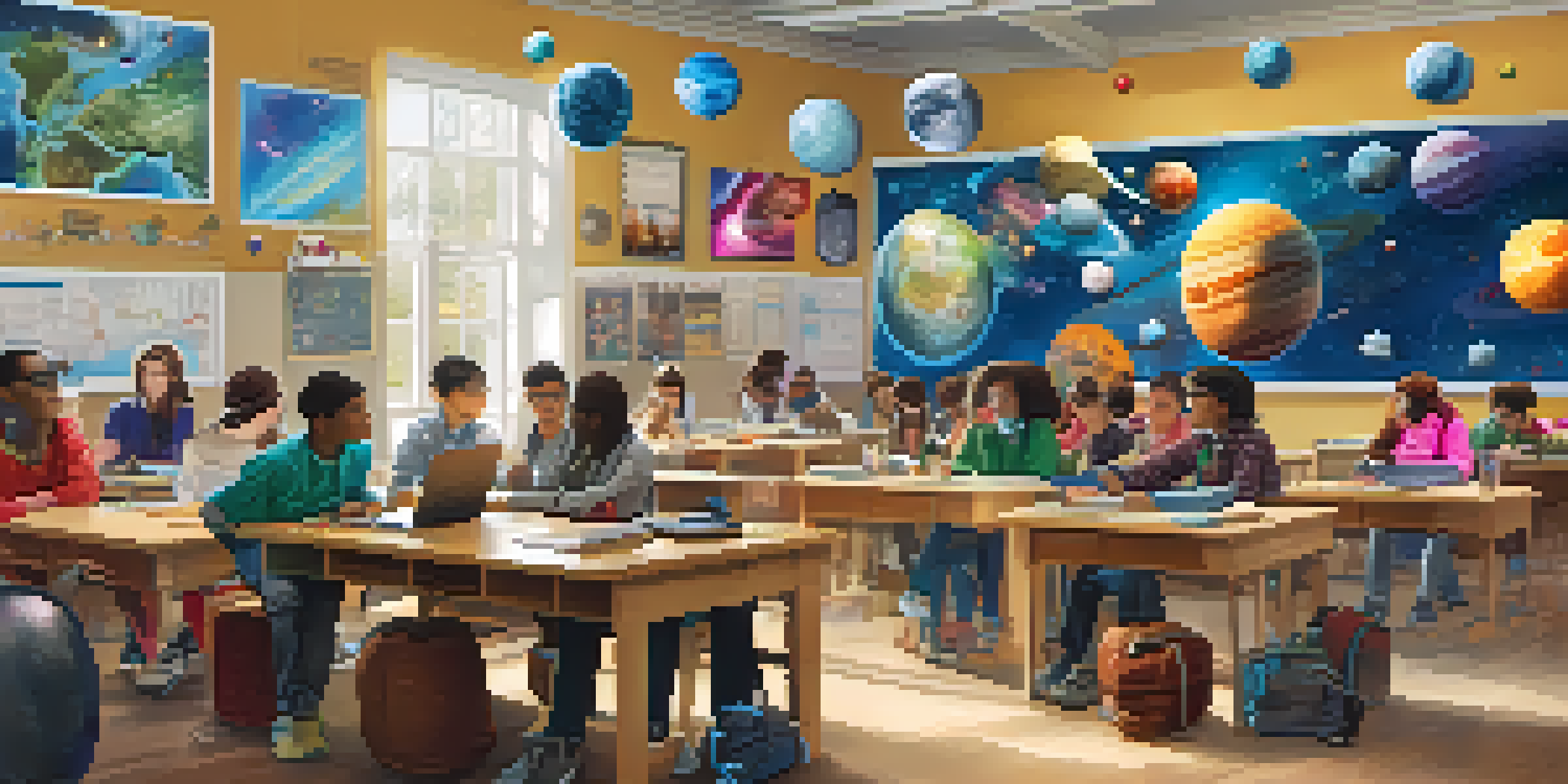The Use of AR in Developing 21st Century Learning Skills

Understanding Augmented Reality in Education
Augmented Reality, or AR, blends the digital and physical worlds, making it a game-changer in education. Imagine looking at a textbook and seeing 3D models pop out, allowing students to interact with complex concepts. This technology creates immersive experiences that can engage learners in ways traditional methods cannot. By integrating AR into the classroom, educators can cater to various learning styles, making lessons more vivid and memorable.
Fostering Critical Thinking through AR
One of the key skills needed in the 21st century is critical thinking, and AR provides unique opportunities for its development. For instance, students can engage in problem-solving scenarios that require them to analyze data and make decisions in real-time. By simulating real-world challenges, AR encourages learners to think critically about their choices and the consequences that follow. This not only enhances their analytical skills but also prepares them for future situations they may face.
AR Enhances Critical Thinking Skills
Augmented Reality encourages students to engage in problem-solving scenarios, fostering critical thinking and decision-making.
Enhancing Collaboration with AR Experiences
Collaboration is essential in today’s interconnected world, and AR can facilitate teamwork among students. Imagine a group project where students work together on a shared AR platform to create a presentation, all while visualizing their ideas in real-time. This shared experience fosters communication and encourages students to learn from each other. Such collaboration not only builds social skills but also teaches students how to work effectively in diverse teams.
Boosting Creativity through Interactive Learning
AR opens up endless possibilities for creative expression in education. When students can visualize their ideas and bring them to life through AR tools, they often feel more inspired to experiment and innovate. For example, art students can create digital sculptures that interact with the physical space around them. This blend of creativity and technology not only makes learning fun but also encourages students to think outside the box.
AR Fosters Collaborative Learning
Through shared AR experiences, students can work together on projects, enhancing teamwork and communication skills.
Personalizing Learning Paths with AR
Personalized learning is becoming increasingly important, and AR can help tailor education to individual needs. With AR, students can explore subjects at their own pace, diving deeper into areas of interest or revisiting challenging concepts. This flexibility allows for a more customized educational experience. By empowering learners to take control of their education, AR promotes self-directed learning, a crucial skill for lifelong success.
Building Digital Literacy Skills through AR
In our technology-driven society, digital literacy is vital, and AR plays a significant role in developing these skills. As students interact with AR applications, they learn to navigate digital environments effectively. This hands-on experience not only boosts their confidence in using technology but also prepares them for future careers that will undoubtedly require digital proficiency. In essence, AR serves as a bridge between education and the digital world.
AR Personalizes the Learning Experience
With AR, students can explore subjects at their own pace, allowing for a tailored educational journey that promotes self-directed learning.
Engaging Diverse Learners with AR Tools
One of the most significant advantages of AR is its ability to engage diverse learners. Students with different backgrounds and learning preferences can find common ground in interactive AR experiences. For example, visual learners can benefit from 3D models, while kinesthetic learners can engage with hands-on activities. This inclusivity not only enriches the learning environment but also fosters empathy and understanding among students.
The Future of AR in Education
As technology continues to evolve, the future of AR in education looks promising. Innovations in AR are likely to make learning more interactive, accessible, and effective. With ongoing research and development, we can expect new applications that will further enhance educational outcomes. Embracing AR today means preparing students for a future where technology and education go hand in hand, equipping them with the skills they need to thrive.